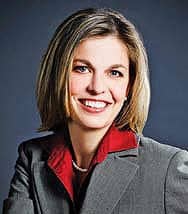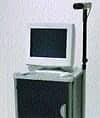
In an industry moving out of the fledgling phase and toward a more competitive and saturated stage of market maturity, sleep facilities should be cultivating a culture of constant reevaluation and responsiveness. For the sake of long-term viability, sleep facilities must consider the optimization of operations a necessary undertaking in order to remain productive and profitable while maintaining the health of patients.
Sleep laboratories today face many challenges, including an economic recession, increases in uninsured and Medicare patients, and growing competition for services. With these factors in mind, there still remain numerous measures a proactively minded sleep facility can take to challenge hardship head on.
To determine whether your sleep laboratory is working efficiently, begin by asking the following questions:
- Is any portion of your sleep scoring process performed by unregistered technologists?
- Does it take longer than three business days for your laboratory to score patient studies?
- Does your laboratory have a mechanism to verify the accuracy of scored sleep studies?
- Do you have a process to evaluate the quality of your patients’ sleep study hookups?
- Do you have a wait time of over 1 month for a patient to receive a sleep study appointment?
- Do you have a high turnover of staff and technologists?
- Do you have an appointment cancellation program?
The answers to these questions will serve as a starting point for organizational self-evaluation and assist a sleep lab or hospital in taking steps toward improving efficiency by enhancing internal standards, setting goals, asking for feedback, implementing cancellation policies, filling beds, making the most of labor, and increasing responsibility and accountability.
ENHANCE INTERNAL STANDARDS
As a baseline practice, truly committed hospitals and sleep laboratories should consider adopting a registered-technologists-only policy for the scoring of sleep studies as a measure to achieve excellence and maintain effectiveness. Sleep laboratories should mandate existing sleep technicians to become RPSGTs and give them the tools, education, and encouragement to do so. Certification is quickly becoming the industry norm. According to the Board of Registered Polysomnographic Technologists, as of January 2010, “The number of sleep technologists worldwide who’ve earned the RPSGT credential has topped 15,000. This means there are more highly qualified sleep technologists than ever available to help treat the rapidly growing number of people seeking treatment for sleep disorders.”
The level of training and expertise that a RPSGT-certified and BRPT-tested individual comes pre-equipped with provides an exponential boost to quality, which will permeate an organization in measurable ways.
Not only should you have sufficient registered techs on staff, but you should have a roster of registered techs available for contract work as part of a contingency plan to cope with vacation and sick leave or times of increased volume.
SET GOALS
Communication is key. Staff should be well acquainted with the expectations that come with their positions. They should also be sensitized to recognize signs of waning efficiency. For example, create policies for reporting unacceptable sleep study backlogs so that additional resources can be deployed in advance. In order to do so, concrete targets must be established and recovery plans put in place to address goals that remain continuously unmet.
Having goals is the first step toward a universal work ethic. In addition, goals can be communicated visually for ease of transmission among staff members. Lists containing weekly goals encourage employee interaction as they check off successfully completed tasks. These lists can help communicate such things as the number of studies that need to be scored by each technologist; turnaround times on scoring (72 hours is ideal); prioritization of patients; and no-show statistics (beds should never remain empty). Furthermore, these lists can be used as part of a longer-term documentation system to track monthly and yearly goal completion.
ASK FOR FEEDBACK
To uncover inefficiencies that may extend beyond your limited vantage point from within your sleep facility’s walls, you may have to ask for some outside help. Develop a questionnaire that can be sent to patients via mail or online. Or should you have the additional manpower, have a staff member make direct calls to patients to obtain customer service data. In your questionnaires you might want to include such queries as: How knowledgeable was our staff? Did they make you feel comfortable and answer all your questions satisfactorily? Do you feel that we are appropriately staffed? Did you have to wait and were your needs attended to? Did you get test results in what you consider to be a timely manner?
Staff should also be asked for their opinions regarding the improvement of operations. Omitting or excluding staff can cause resentment and actually make matters worse.
IMPLEMENT CANCELLATION POLICIES
One of the greatest efficiency challenges a sleep laboratory faces is last minute cancellations. While you might meet resistance, a cancellation policy informing patients that a charge may occur, should they not provide sufficient notice, does go a long way to deterring no-shows. Explain to patients that the policy is required to ensure no bed is left empty while other patients in need wait unnecessarily. You might consider posting a message similar to the following:
“In order to respect the medical needs of all within our patient community, please be courteous and call us immediately if you are unable to attend an appointment. By doing so, this time will be reallocated to those in urgent need of treatment.”
At the same time, remain sensitive to the fact that emergencies do occasionally arise and do your part to expect the unexpected. Have an updated “waiting list” or collection of “last minute” patients whose flexible schedules can be made to work in your favor. Attention to these micro-issues is what makes high-performance sleep laboratories.
FILL BEDS
While most sleep facilities will have marketing initiatives to lure referring physicians in hopes of filling their beds, many fail to capitalize on the low hanging fruit such as patient referrals.
Word-of-mouth is still one of the most effective marketing tools, but it is contingent on patients having a positive experience. When patients are satisfied, they are likely to recommend your facility to friends, family, colleagues, and acquaintances. You must also remember that a satisfied patient will mean a satisfied referring physician who can play a vital role in filling your beds. Consider asking those who openly share their satisfaction for a written testimonial. Incorporate their words in online and print collateral.
MAKE THE MOST OF LABOR
The largest expense most sleep laboratories endure is personnel costs (both physicians and technical staff). If you can save personnel time, you can save money.
Sleep facilities can benefit from outsourcing to sleep scoring vendors who can help you deal with staffing shortages and backlogs. You might also want to gain from the increased accountability that comes from a reputable vendor who can help you increase services while reducing overhead costs.
INCREASE RESPONSIBILITY AND ACCOUNTABILITY
Responsibility and accountability are essential to an effective and efficient sleep facility. Ensuring that all staff have been delegated reasonable tasks, and that they understand the expectations placed upon them, will help reduce oversights arising from false assumptions. This is where documentation is essential. Whether it is the integration of a daily work in progress list, the signing off of completed tasks, or having your weekly goals list serve a dual purpose, duties need to be clearly and frequently communicated.
However, accountability can start even earlier. Much ambiguity arises in job descriptions that are too vague to give an employee/technologist a defined sense of purpose. This often leads to unnecessary redundancies as one employee duplicates another’s work. The best way to retain good employees is to have them involved in the development of both their specific role and the overall sleep laboratory operations.
The implementation of any form of improvement or efficiency program is often met with reluctance from employees who see such measures as a threat to their job security or identity. Hence, top management and front line employees have to see efficiency revamps as a shared responsibility with implementation power and decision-making coming from both directions. Solicit employee and customer feedback from the outset to gain buy-in early on. Maintain interest throughout the duration of the program by recognizing and rewarding outstanding performance. Regular employee meetings provide an ideal setting for administering such recognition and for adjusting goals and targets based on ongoing experiences. Remind them that being efficient is about being effective. The ultimate purpose of a lean sleep laboratory is to build a desire for excellence in employees so that their sleep facility can gain competitive advantage and remain profitable, while still providing the highest level of patient care.
Natalie Morin, RPSGT, is president and CEO of Sleep Strategies Inc, a provider of professional scoring and consulting services for sleep disorders facilities worldwide. The author can be reached at [email protected].




